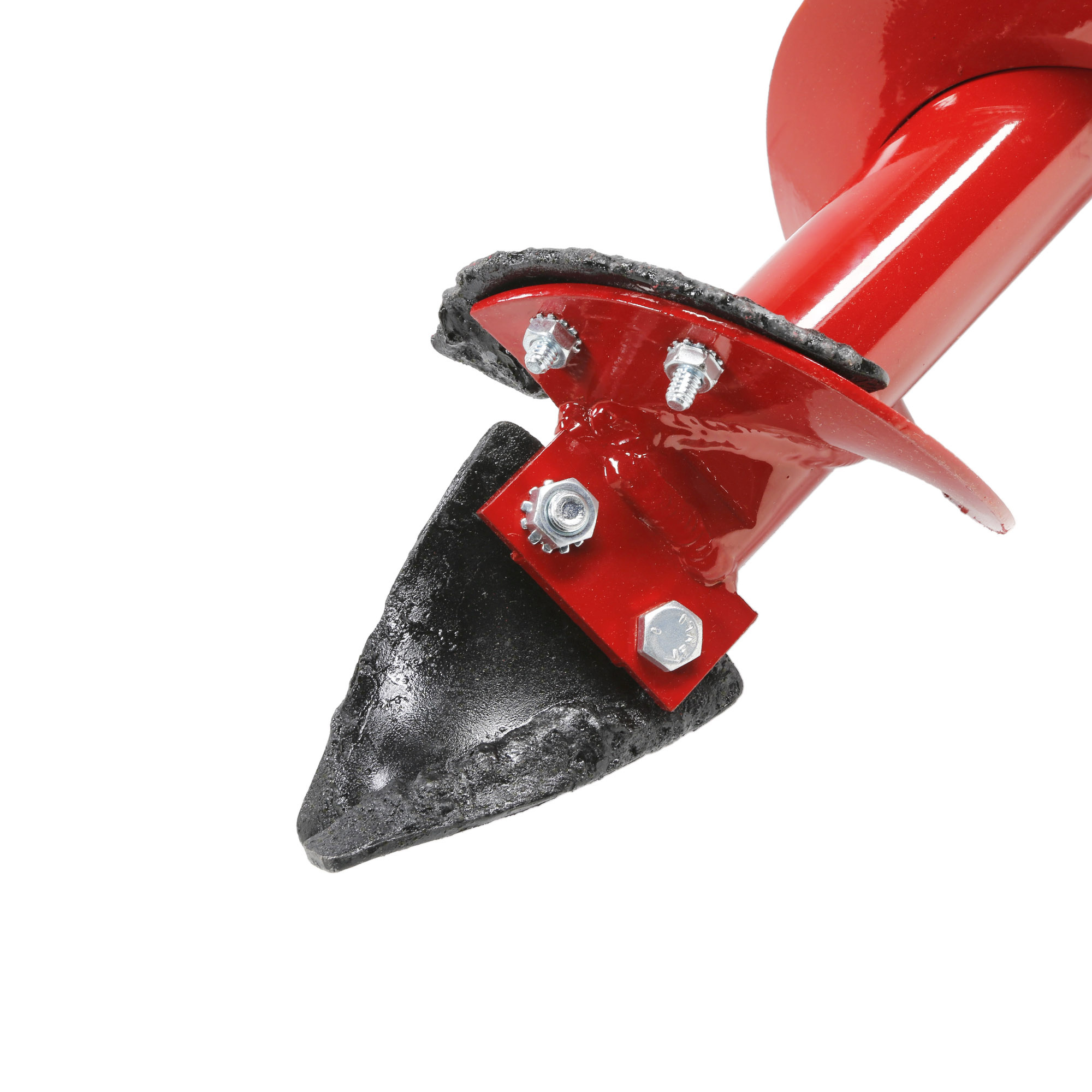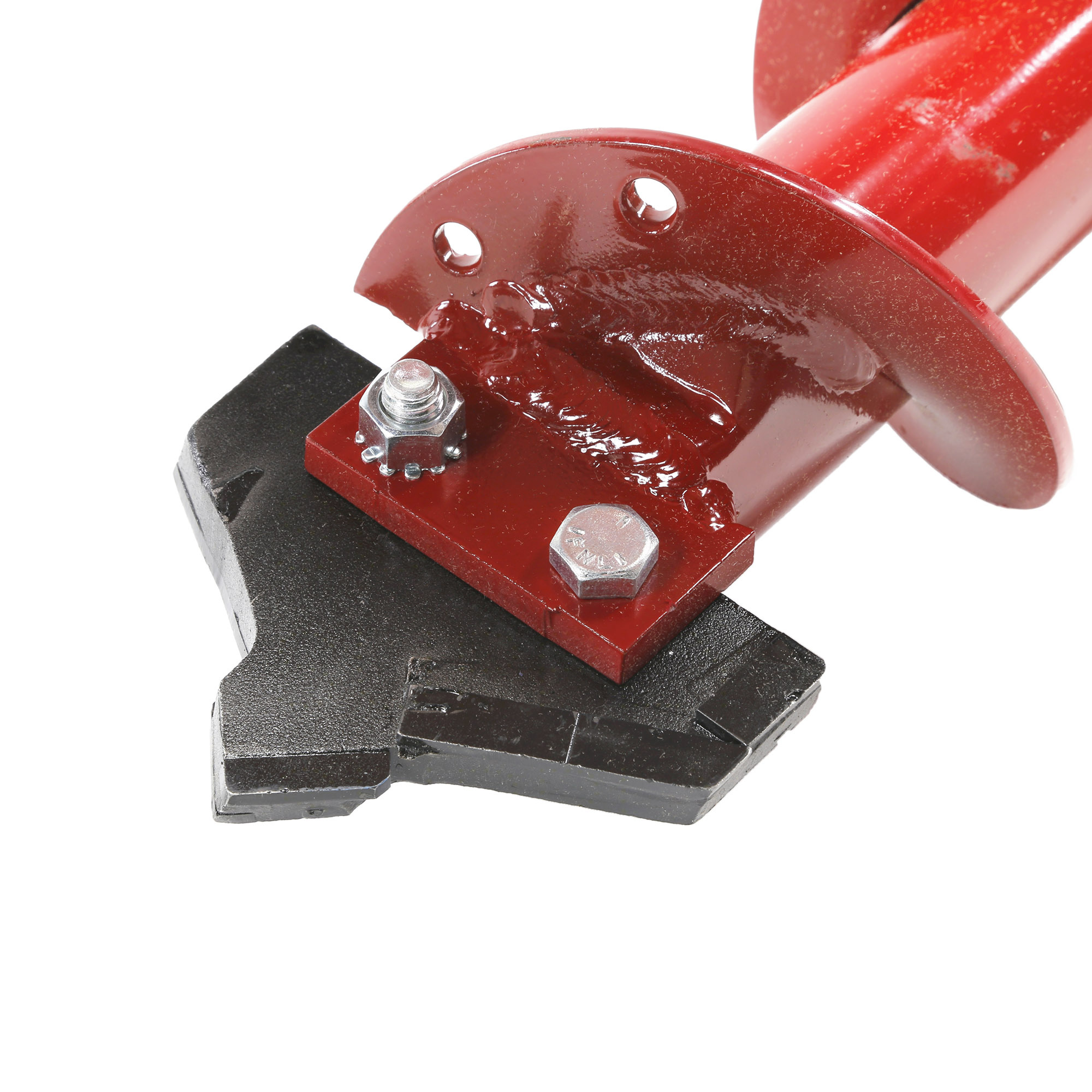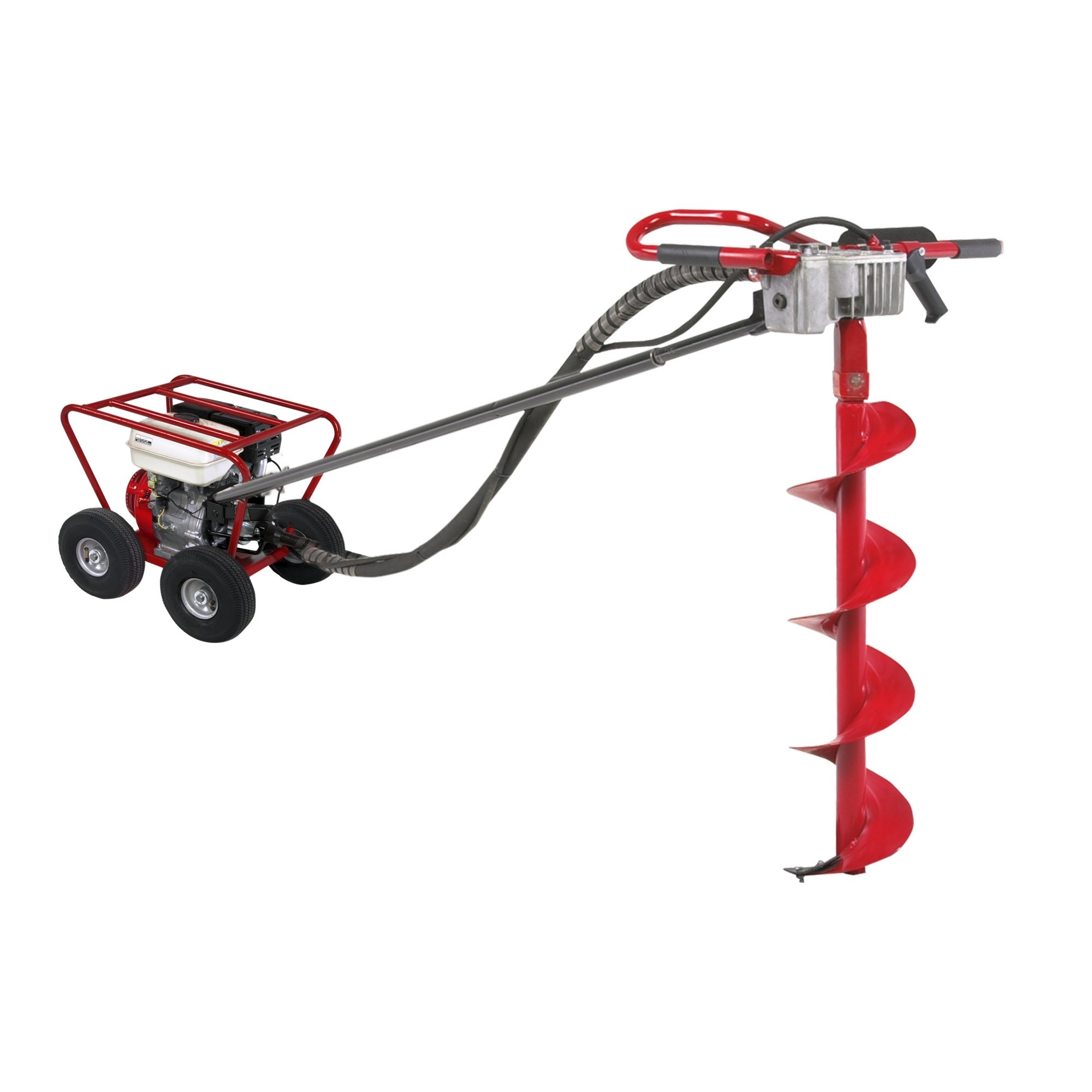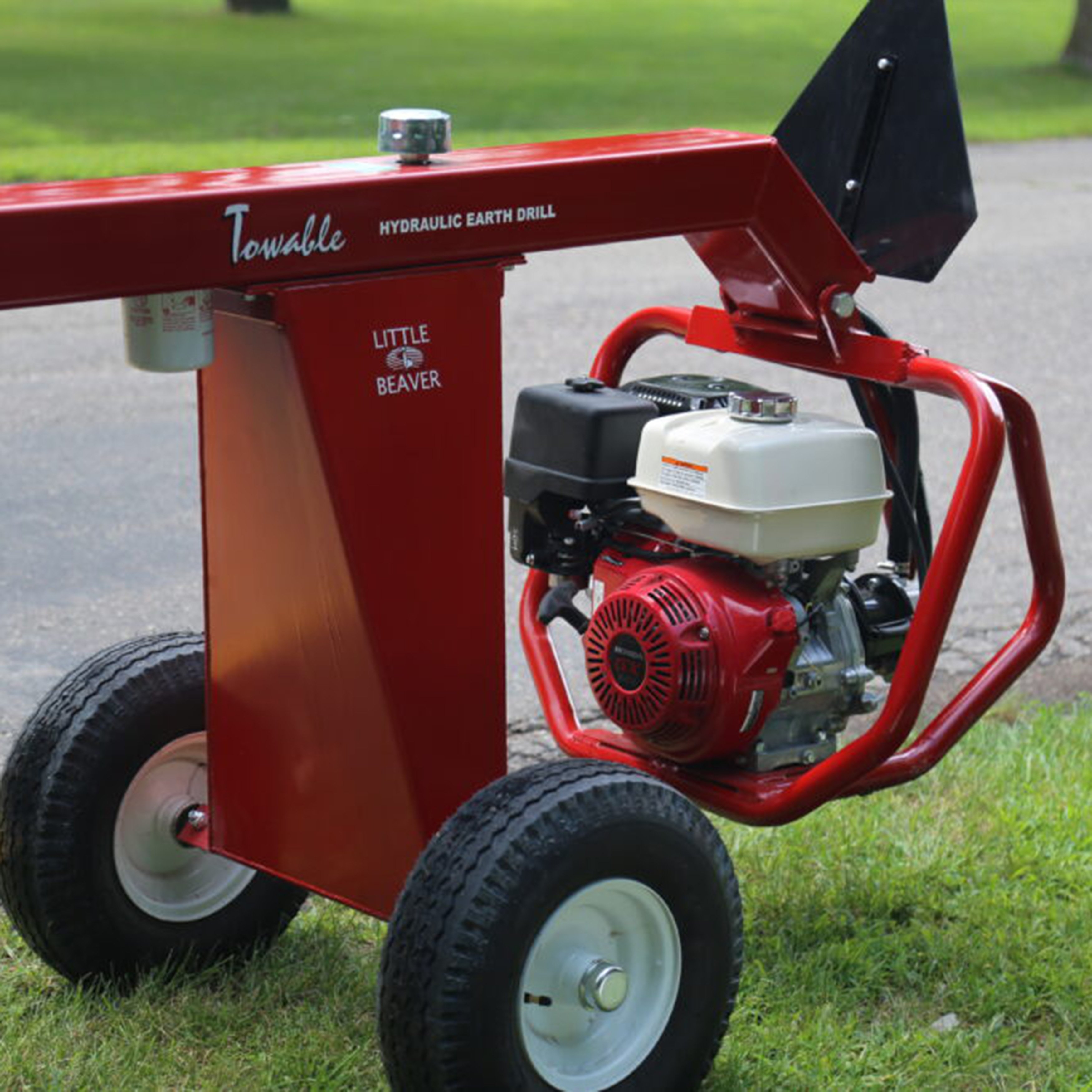Tree planting is a rewarding but labor-intensive task, especially when multiple trees need to be planted at once. For landscaping companies handling projects that involve planting 30 or more trees, manual digging quickly becomes impractical. This is where powered post hole diggers come in. With the ability to dig both wide and deep holes efficiently, these machines simplify the tree planting process while ensuring consistency and quality across the entire job site.
Why Powered Post Hole Diggers Make Sense for Large Planting Jobs
Using a powered post hole digger helps reduce the physical strain on workers while drastically speeding up the process. Manual digging can take several hours for multiple trees, but a mechanical or hydraulic digger completes each hole in a matter of minutes. More importantly, the holes are more uniform, which benefits the long-term health of the trees being planted.
For landscaping companies, powered augers also help maintain schedules and meet client deadlines. By eliminating the need for extensive manual labor, companies can take on larger projects with fewer crew members while still delivering high-quality results.
Selecting the Right Auger Size for Tree Planting
The size of the auger plays a significant role in successful tree planting. Selecting the proper diameter ensures the tree roots have enough space to grow and establish themselves in their new environment. Always aim for a hole at least twice the width of the tree’s root ball to encourage healthy root expansion. Depth should generally match the height of the root ball, ensuring the tree sits at the correct soil level after planting. General guidelines for auger size include:
- 4 to 6 inch augers: Ideal for small ornamental trees, shrubs, or posts.
- 8 to 12 inch augers: Suitable for medium-sized trees in smaller containers or balled and burlapped trees with smaller root balls.
- 14 to 18 inch augers: Best for larger trees, especially those in 10 to 15-gallon containers or larger.

Standard Snap-On Augers
This standard snap-on auger can dig in sand, loam, and clay. This standard digger is not made for hard or frozen soil. Use this multi-purpose general auger to dig through average soil. If you need something more, look at other options.
Learn More
Pengo Snap-On Augers
When you need to dig through rocky soil, pengo-style augers are what you need. Trying to get through abrasive soil? Pengo-style augers have a rugged design that will not fail when faced with difficult terrain.
Learn More
Carbide Snap-On Augers
If you must tackle drilling through frozen clay or hard pan soil, carbide augers come with carbide blades that will easily dig through compacted soil. Use these augers for soft sandstone or limestone and make it simple to dig.
Learn MoreMechanical vs Hydraulic Post Hole Diggers
Choosing between mechanical and hydraulic post hole diggers is an important decision for any landscaping company planning a large-scale tree planting project. Both types of diggers are highly effective but serve different purposes based on the scale of the project, soil conditions, and accessibility of the job site. Understanding their differences helps ensure that you select the best equipment for the job, leading to smoother operations and healthier trees.
Mechanical Post Hole Diggers

- Lightweight and easy to transport
- Ideal for small to medium-sized jobs
- Performs well in softer, less compacted soils
- Fits into tight or hard-to-reach spaces
- Lower initial investment cost
Mechanical post hole diggers are typically lighter and more portable than their hydraulic counterparts. They are powered by small gas engines and are easy to transport between job sites, making them a practical choice for smaller landscaping crews or residential jobs. These diggers excel in softer soils where high torque isn't necessary and can still handle a surprising range of conditions with the right auger bit. Mechanical models also tend to have lower upfront costs, making them accessible for smaller companies or contractors who may not need the extra power of hydraulic systems.
Shop Mechanical Earth Drills
Hydraulic Post Hole Diggers

- High torque for tough soil conditions
- Handles clay, rocks, and compacted ground with ease
- Smoother operation reduces operator fatigue
- Swiveling head allows for precise hole placement
- Ideal for large-scale commercial landscaping projects
Hydraulic post hole diggers are designed for heavy-duty use, delivering significantly more torque and digging power. These machines excel in challenging soil conditions, including dense clay, rocky ground, and compacted soils that would overwhelm mechanical models. The hydraulic system provides smooth and steady operation, which reduces strain on the operator and allows for more precise control during digging. Although they are heavier and less portable, their power and efficiency make them indispensable for large-scale tree planting projects where dozens or even hundreds of holes need to be dug quickly and accurately.
Shop Hydraulic Earth DrillsHow to Prevent Glazing When Using Augers
Glazing is a common challenge that occurs when the sides of a hole become smooth and compacted, particularly in clay soils. This creates a slick surface that can restrict water penetration and root growth, ultimately affecting tree health.
To avoid glazing:
- After digging, use a shovel or garden fork to rough up the sides of the hole.
- Break up any polished surfaces to allow water and roots to penetrate more easily.
- Consider using a wider auger when digging in heavy clay to reduce compaction.
- Water the hole lightly before planting to help loosen soil around the edges.
Taking these steps ensures that the trees have the best chance to establish strong, healthy root systems.
Step-by-Step Guide to Digging Tree Holes with a Mechanical or Hydraulic Earth Drill
Using a powered earth drill makes tree planting much faster and more consistent. Whether you are using a mechanical or hydraulic post hole digger, following a step-by-step approach ensures each hole is dug correctly and safely. Below is a simple guide that landscaping crews can follow for efficient and effective tree hole digging.
Before Starting Large-Scale Planting Projects
Before starting any large tree planting job, preparation is crucial. Proper planning helps avoid costly mistakes and ensures smoother operations on site.
Key preparation steps include:
- Survey the planting site and mark all tree locations in advance.
- Call utility companies to locate underground lines before digging.
- Determine soil conditions and select the appropriate auger size and digger type.
- Organize materials such as mulch, soil amendments, and water sources ahead of time.
Step 1: Survey and Mark the Planting Locations
Begin by carefully surveying the site and marking each spot where a tree will be planted. Use spray paint, flags, or stakes to identify the center of each hole. Make sure each spot has adequate spacing based on the tree species and future canopy size. Verify there are no underground utilities or obstructions beneath the chosen locations.
Step 2: Choose the Correct Auger Size
Select an auger that matches the size of the tree's root ball. The hole should be at least twice the width of the root ball to give the roots ample space to spread and grow. For example, a 15-gallon container tree may require an auger between 14 and 18 inches in diameter. This step ensures the tree has the proper foundation for healthy establishment.
Step 3: Inspect and Prepare the Equipment
Before beginning work, inspect the post hole digger to ensure all components are in good working condition. Check fuel levels for mechanical drills and hydraulic fluid levels for hydraulic models. Make sure the auger is securely attached to the drill head. Always review safety protocols, ensure guards are in place, and verify that all operators are trained and wearing proper protective equipment.
Step 4: Position the Drill and Begin Digging
Carefully position the drill directly over the marked spot. For hydraulic drills with a swiveling head, adjust the head to maintain a vertical position even on uneven ground. Start the drill at a low speed to stabilize the auger before increasing the speed for full digging power. Allow the auger to penetrate the ground steadily without forcing it. Maintain steady downward pressure while letting the machine do most of the work.
Step 5: Use Extensions if Needed
If a deeper hole is required, attach an extension to the auger to reach the desired depth. Make sure the extension is properly secured before resuming drilling. Drill in increments, pulling the auger up occasionally to clear loose soil and prevent clogging. This step is especially helpful when planting larger trees that require deeper planting holes.
Step 6: Prevent Glazing and Prepare the Hole
Once the hole is fully dug, check the sides for glazing, especially if drilling in clay-heavy soil. Use a shovel or garden fork to rough up the sides of the hole, breaking up any smooth, compacted surfaces. This allows water to penetrate and roots to grow outward more easily. Remove any remaining loose soil or debris from the bottom of the hole to create a clean planting area.
Step 7: Repeat for Additional Trees
After completing one hole, move the equipment to the next marked location and repeat the process. Maintaining a consistent workflow ensures all holes are uniform in size and depth, leading to better planting consistency across the entire site. Periodically inspect equipment throughout the process to maintain safety and performance.
Contact Us
When your landscaping crew needs to dig dozens of tree holes quickly and efficiently, using a mechanical or hydraulic earth drill is the smart choice. The right equipment saves time, reduces strain on your team, and ensures each tree is planted with the proper depth and width for healthy growth. From selecting the correct auger size to preventing soil glazing, powered post hole diggers simplify every step of the process. Whether you're working with softer soil or tough, compacted ground, we offer solutions to match your project needs. Our team is here to help you choose the right earth drill and auger combination for your specific tree planting jobs. Reach out to us today to learn more, get expert advice, and make your next tree planting project faster, easier, and more successful.
Contact Us



